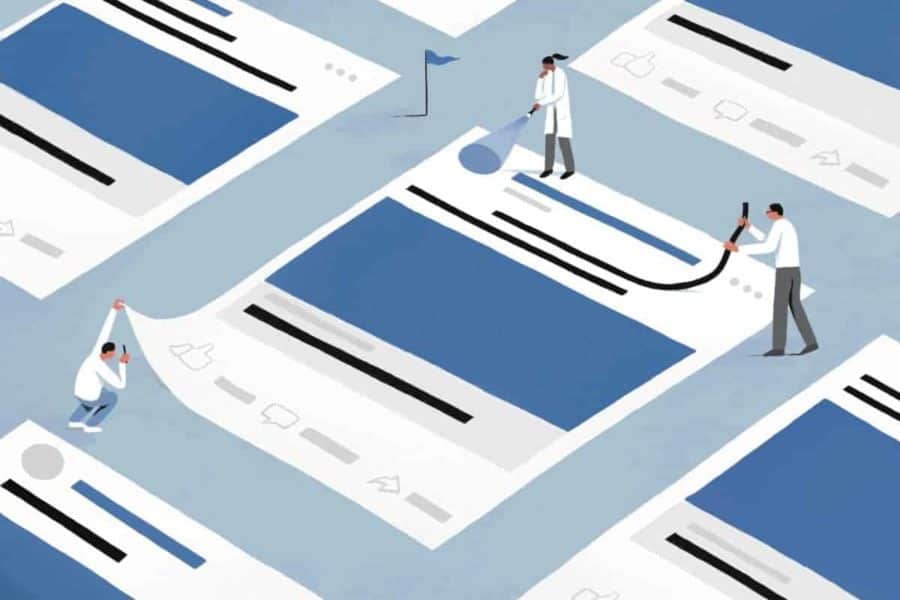We hear a lot about fake news, but do we know it when we see it?
Research from The University of Texas at Austin has found that although Facebook users may be too quick to believe or share misinformation, flagging fake news can make a significant difference. In fact, the study, published online today by Information Systems Research, shows that platforms can reduce the extent to which their users fall for and spread fake news articles by deploying a better designed fake news flag.
The new paper studied what tools would help Facebook users spot fake news. Lead author Tricia Moravec, an assistant professor in the McCombs School of Business, and her two co-authors, Antino Kim and Alan R. Dennis of Indiana University, found that two simple interventions, especially when combined, had a strong effect on helping people discern real from fake news.
The first intervention the researchers tested was a stop sign icon. The second was a strong statement, “Declared Fake by 3rd Party Fact-Checkers.” Each intervention was effective, but when combined, they were almost twice as powerful, the study says.
“Ideally, we would see Twitter and especially Facebook use some type of flag for misinformation with a brief statement to nudge people to think more critically,” Moravec said.
Twitter has begun using labels and warning messages. Facebook uses technology and fact-checkers to identify false information and moves the information lower in the News Feed so it’s less likely to be seen. Facebook also says that people who repeatedly share false news will see their distribution reduced and their ability to advertise removed.
“Twitter has been doing a much better job than Facebook at managing misinformation, since they actively flag misleading information,” Moravec said. “It is a good step that Facebook is taking to at least demote misinformation and punish repeat offenders, but based on the misinformation I have seen about COVID-19 on Facebook, I do not think their efforts are effective in managing misinformation on their platform.”
Moravec said that the proliferation of fake news on social media worsened during the 2016 election and has accelerated during the COVID-19 pandemic, feeding confusion and misinformation about matters that can have life-and-death consequences. As sharply divided Americans face the November presidential election amid warnings of interference from Russia and other countries, stopping the threat of fake news takes on greater urgency, she said.
The researchers focused on social media because that’s where more than 60% of adults get their news, with Facebook being the world’s most-used platform.
Moravec and her two colleagues conducted several studies to see what would have the biggest impact on getting people to avoid spreading fake news. First, they tested the stop sign icon and fake news statement for one second and five seconds. One second is enough time to elicit an automatic gut reaction, while five seconds can capture the effect of critical thinking. That was accompanied by “awareness training,” which was a brief announcement explaining the warnings.
They then tested the stop sign and statement together with users being trained partway through the study. Finally, to better understand the training’s effect, some participants received training, and others did not. The researchers found that the combination of the stop sign, statement and awareness training had the biggest impact.
Although Facebook in December 2016 started flagging fake news with an icon combined with a brief warning statement, it stopped doing so about a year later. Facebook did not do awareness training on the meaning of the warning and the statement, which said, “Disputed by 3rd Party Fact-Checkers,” and that may have made the tool less effective, Moravec said.
She believes Facebook abandoned the fake news flag too soon and needs to try again, possibly using the system she and her team tested.
“How much could it have helped if Facebook had a flag on false COVID-19 information?” she asked. “Even if it didn’t work for everyone, at least getting some people to change or critically consider some health information is progress.”
For more information about this research, read the McCombs School of Business Big Ideas feature story or watch the video interview.
MEDIA CONTACT
Molly Dannenmaier
McCombs School of Business
p: 409-771-5105
e: [email protected]


